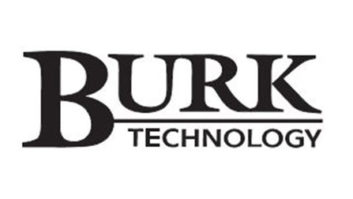
BBC Director of BBC Distribution Alix Pryde speaks to TechCon attendees during the opening keynote.
SALFORD, England — TechCon, part of the Radio Festival, is the annual conference for those who work in radio technology and engineering, and is organized by the United Kingdom’s Radio Academy as part of the annual Radio Festival. Present at this year’s event, which took place Oct. 14, were technology staff from commercial radio, community radio and the BBC.
Dr. Alix Pryde, the director of BBC Distribution, gave the opening keynote, reminding participants that while TechCon was a good conference to explore future technologies and opportunities, “we shouldn’t lose sight of the fact that overwhelmingly our audiences still come to our services through broadcast platforms.”
THE FACTS
Pryde highlighted the U.K.’s breakfast peak for radio listening, saying that 17 million people are all listening to radio at the same time. If we were to deliver their radio audiences via streaming it would require two terabits of data per second, she said, claiming that this was equivalent to the entire capacity of the Internet into U.K. homes. Highlighting parallels with the slow take-up of FM broadcasting, Pryde said of DAB that we should “keep the faith,” and she announced a significant expansion of the BBC national DAB transmitter network: another 162 transmitters reaching more audience and boosting coverage for many.
The DAB expansion makes the network 70 percent bigger in terms of transmitters. DAB is used by 35 percent of the U.K.’s adult population each week.
4G mobile networks present opportunities to radio broadcasters for program contribution and for listener reception. Delegates heard a series of presentations from mobile operator EE, network company Ericsson, and the BBC. Some examples were given of video contribution from live outside broadcasts using 3G and 4G technologies.
The possibilities of eMBMS, otherwise known as LTE Broadcast, were explored as a potential way for audiences to consume broadcast content on their mobile devices. Unlike regular Internet streaming, which is one-to-one, eMBMS offers one-to-many distribution, including potential support of single frequency networks.
It was ideal, said the speakers, to relieve mobile phone network data congestion. However, no mention was made of the cost to broadcasters or listeners and it was mentioned that the eMBMS receiver needs to be active on handsets.
IMPACT OF SWITCHOVER
Ann Charles, project manager for BBC Radio’s Major Projects Infrastructure team, described the BBC’s approach to accessibility in new radio studios. Giving an example of keyboard shortcuts for systems that otherwise require a mouse, she said “accessibility isn’t just for users with disabilities: it makes [studios] better for everyone.”
Charles highlighted the benefits of studio systems that have adjustable font sizes and changeable screen colors, and showed a video of Mani Djazmi, a blind broadcast journalist working for BBC Radio 5 Live in a studio environment. Djazmi said in the video that new technology now meant that he was able to work alone in the studio for the first time. This was a heartwarming example of the work of studio engineers and planners.
Jane Ostler, communications director at Digital Radio UK, outlined a consumer trial of DAB Digital Radio, measuring the impact of radio switchover on consumers. The U.K. is working toward an FM switch-off, and this trial, in the city of Bath in the Southwest of England, was designed to follow the attitudes of radio listeners to this new technology. The report has been published online.
In a session entitled “loud and clear,” Bjørn Aarseth, senior engineer from Norway’s NRK, described how he had recently worked with the rest of the Norwegian radio industry to achieve the same loudness level on DAB broadcasts.
Agreed at -15 LUFS, the normalized audio levels on Norwegian DAB now minimizes jumps in volume level when a listener changes stations. The agreement was made quickly, said Aarseth — so quickly that one station had already adjusted their transmission levels by the end of the meeting. A presentation prepared by Thomas Lund, CTO of Broadcast and Production at TC Electronics and presented by BBC’s Principal Technologist Simon Tuff, showed the state of recorded music and was an eye-opener for many: comparing the high dynamic range of early CDs with those available now.
DISTORTION
It was shown in some clips that many music tracks have unintentional distortion introduced in their CDs. There was a call from many of the speakers for the recording industry to “end the loudness war,” and ensure that audio is clear and distortion-free for broadcast.
James Adams from the Raspberry Pi foundation highlighted some of the benefits of the US$35 credit card-sized Linux computer for the radio industry. Already in use at many radio stations for monitoring and information displays, the Raspberry Pi has also been used for other uses.
Rashid Mustapha, senior broadcast specialist from U.K. broadcast regulator Ofcom, demonstrated a DAB multiplex that used the Raspberry Pi to run multiplexer software for the broadcast. With no moving parts and flash memory, Mustapha said that a Raspberry Pi is an ideal platform for low-cost, reliable source encoders and ensemble multiplexers.
At the end of the day, the winner of the annual TechCon Innovation Award was announced. In:Quality Media, the winning company, installs and remotely-manages equipment to allow live interviews on TV or radio programs from the home or office. The company claims its IP DTL technology can be received by the broadcaster without requiring any proprietary hardware or software: just using the Chrome browser.
James Cridland is the managing director of media information site Media UK, and a radio futurologist: a consultant, writer and public speaker who concentrates on the effect that new platforms and technology are having on the radio business.












